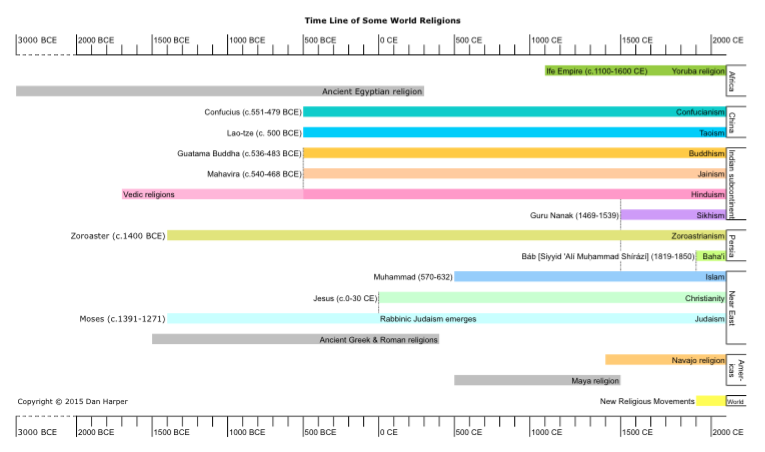If you’ve ever referred to the “Axial Age,” Jack Tsonis, lecturer at the Graduate REsearch School, Western Sydney Univ., suggests you might want to stop. “Axial Age” is a term coined by Karl Jaspers to describe a time about two and a half millennia ago when several key religio-philosophic texts emerged: the Dao de Jing, the Bhagavad Gita, the writings of Plato, the Lun Yu (Analects), the books of Jeremiah and Isaiah in the Hebrew Bible, etc. The “Axial Age” is typically represented as a time when religion and philosophy emerged, as it were, into the light from the darkness of “primitive” thinking. This would imply that, for example, Christianity is somehow better or more advanced than Lakota religion and spirituality. Tsonis says:
“We need a full-scale acknowledgement of just how problematic this whole ‘Axial Age’ story is. So my big thing, I suppose, is that we’ve got to just stop using this term. The ‘Axial Age’ should not have credibility. It’s like ‘world religions.’ You shouldn’t use the term ‘world religions’ if you’re analytically responsible and politically responsible…. I don’t even care how we describe the first millennium B.C.E., I’m not going to use the term world religions, I’m not going to use the term Axial Age, because they’re bankrupt [and] founded in racial ideologies [Editor: and colonial ideologies]. But if you keep using them, even if you’re not aware of this stuff, you feed that discourse. We just need to starve those terms of oxygen.” Link to the Religious Studies Podcast where he makes this comment
Another way of putting this: Using the term “Axial Age” (or the term “world religions”) promulgates a theological position that sets up a hierarchy where indigenous religious traditions are ranked lower. It’s not what you’d call respectful.

